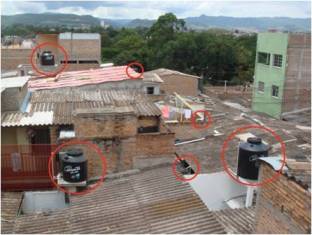Water supply in an urban area: A case study of Tegucigalpa, Honduras
Identifying the problems which causes the lack of investment into the water infrastructure.
Project leader: Berit Balfors and Jan-Erik Gustafsson
Participants: Zairis A. Coello M.B.
Key words: Water supply, water demand, decision making processes, decision support
Project period:
Funding: SIDA
Project description

Tegucigalpa, the capital of Honduras, has experienced an unsatisfied water demand during the last three decades. The state owned water utility in charge of the water supply of the country, SANAA, has faced this deficit by providing an intermittent water supply. The intermittent water supply has increased the gap between the rich and the poor, who cannot afford water storage facilities. Theories explain water scarcity either by low precipitation or by lack of investment in water structures.
Aim
The aim of this project is to investigate the applicability of both explanations by quantifying the annual precipitation in the sub catchments with water supply potential for Tegucigalpa, and identifying the problems which causes the lack of investment into the water infrastructure.
